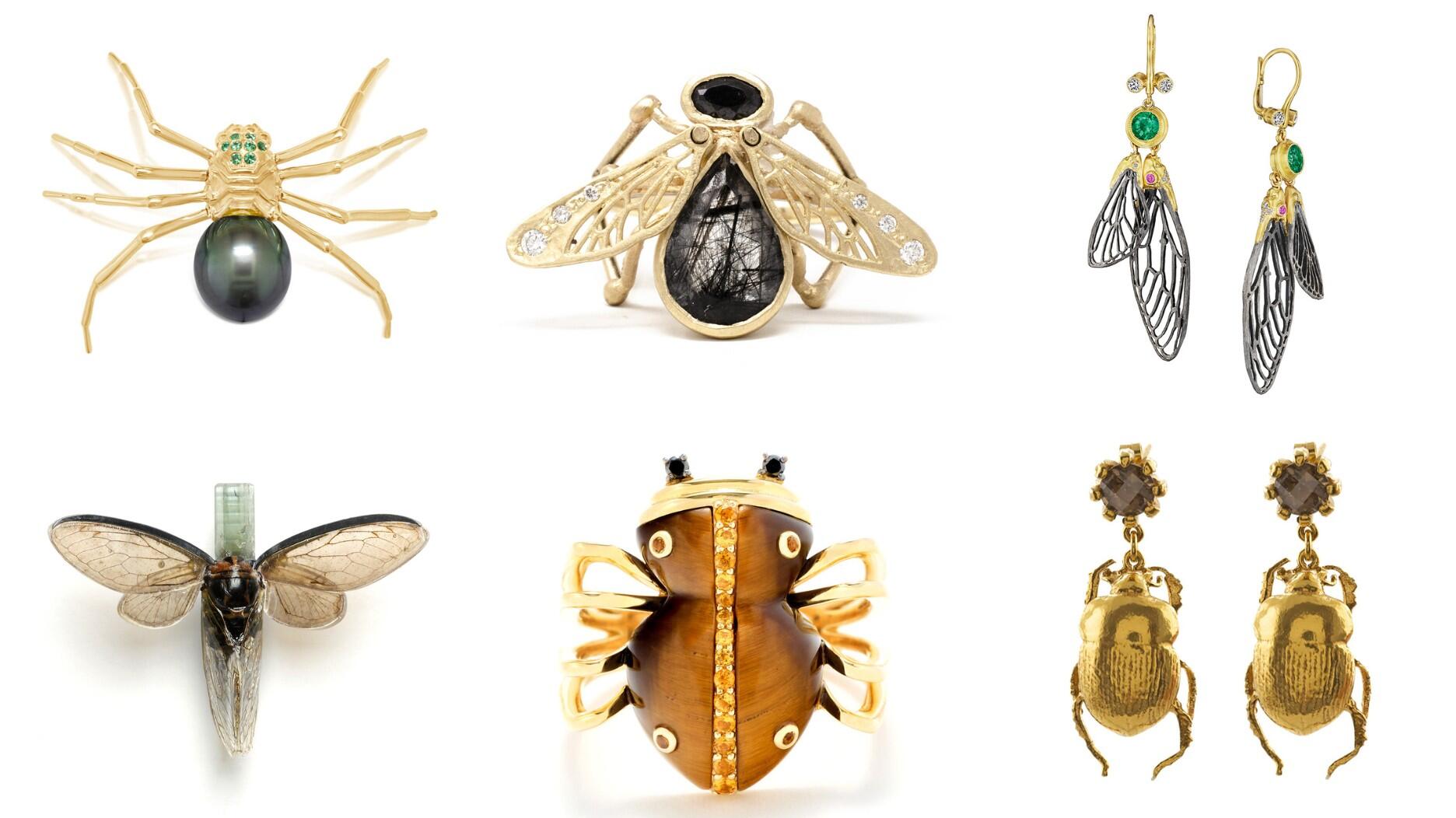Set in a Tiffany & Co. necklace, it sold for $4.2 million, the highest price and price per carat paid for a Paraíba tourmaline at auction.
T.I.A., Part 2: Visiting Small-Scale Mines in Kenya
In the second installment of a multi-part series about her trip to East Africa, Associate Editor Brecken Branstrator talks about her experience visiting two mines in southern Kenya.
I see finished jewelry pieces all the time. I also frequently meet designers, the faces behind the brands, manufacturers and retailers. What I hadn’t seen were the early stages of the process; I’m talking from the point where miners are digging through the earth to find a stone and everything through the purchase of the rough, the cutting and polishing, and on to when it’s ready to be set in jewelry.

My first blog post about my African adventures detailed my experience looking through rough material with two gemstone cutters.
While we were in Kenya, we also got to visit two small-scale, and very different, mining sites.
The first was a cooperative mining area called Chawia Minerals Community Based Organization (CBO). The closest town to it is Mikuki, Kenya, and it produces tsavorite garnet and green and yellow tourmaline.
Currently, there are approximately 220 miners registered with CBO, one owner told me. They have been allocated their own mining pits, and each pit could have several people working it.
Registering with the CBO for the ability to mine costs KSh 5,000 (a little under $50). When the mine owners or their workers find something, they have to take the stone(s) to one of the CBO owners, who values it. Once the price is approved the mine owner pays the CBO owners a portion of that value. They can pay in cash or in gemstones.
The benefit of a cooperative system like this is that it allows more people to have access to mining who might not have been able to afford to buy a site on their own.
While the site is working to promote the local mining community, CBO Chairman Gabriel Mcharo said what they really need is not only investors to help grow the operation but also technology to aid in the mining activity.
I would then see exactly what he meant.

As we walked over to a mine, I noticed a few “steps” that had been carved into the side of the hill (this is pictured in the image on the right in the above set) that allowed for a way to clear out the tailings from the mine.
There were men standing on one step each, all the way down and then into the mining tunnel. The process was slow—workers inside the mine would dig with a shovel and then toss the pile of gravel on to the next man, who would pick it up with his shovel, toss it up to the next, and so it would go out of the mine and up the hill, one by one, to clear it out.
It seemed like such tedious work, I couldn’t imagine how long it would take to make any sort of significant headway. This is the kind of thing that really makes you think about a gemstone differently—knowing the effort that goes into pulling it out of the ground.
The next day, we went to the mine of gem dealer and broker Gichuchu Okeno, which is about a three-hour drive outside of Voi, Kenya.
I briefly mentioned Okeno in my first blog post in the “T.I.A.” series, but that introduction didn’t do him justice. Okeno already seems to be having a big impact on the Kenyan gemstone market, and I can tell he’s going to keep changing it for the better.

Okeno operates his own mine in a very secluded part of southern Kenya. Our Land Cruiser had to go over some very bumpy terrain to get there (picture hours of unpaved road), but the drive was worth it.
His is different from many of the other artisanal mines in that he is not only putting safety first, enforcing regulations such as making the workers wear helmets and fluorescent vests, but he also constructed brand-new housing and a place to cook so the miners can live in better conditions on site.

Okeno also scheduled it so that they would be blasting while we were there, so I got to witness (from a safe distance, of course) them blast away a part of the land as they redirected their digging according to what a geologist told them.
The blast brought up a lot of the vein that they were following, so a few of the workers and Okeno talked us through which pieces indicated that they were going in the right direction to, hopefully, unearth some gemstones.
I sincerely hope it proves fruitful for them soon.
Stay tuned for the next blog post from my trip, highlighting recent announcements from Kenya and Tanzania about keeping gem cutting in-country and what’s being done to try to build that market.
The Latest

The jeweler’s “Deep Freeze” display showcases its iconic jewelry designs frozen in a vintage icebox.

Take luxury gifting to new heights this holiday season with the jeweler’s showstopping 12-carat sphene ring.

How Jewelers of America’s 20 Under 40 are leading to ensure a brighter future for the jewelry industry.

This year's theme is “Unveiling the Depths of the Ocean.”


In its annual report, Pinterest noted an increase in searches for brooches, heirloom jewelry, and ‘80s luxury.

Starting Jan. 1, customers can request the service for opal, peridot, and demantoid garnet.

Roseco’s 704-page catalog showcases new lab-grown diamonds, findings, tools & more—available in print or interactive digital editions.

The 111-year-old retailer celebrated the opening of its new location in Salem, New Hampshire, which is its third store in the state.

The new catalog features its most popular chains as well as new styles.

The filmmaker’s personal F.P. Journe “FFC” prototype was the star of Phillips’ recent record-setting watch auction in New York.

The new location in the Design District pays homage to Miami’s Art Deco heritage and its connection to the ocean.

Inflations, tariffs, and politics—including the government shutdown—were among consumers’ top concerns last month.

“Longtime favorite” presenters, as well as first-time speakers, will lead talks and workshops at the annual event in Tucson next year.

Silas Smith of Meridian Metalworks won the challenge with his pendant that blends Australian and American landscapes.

The sale of the 31.68-carat, sunset-hued stone was part of Sotheby’s first series of events and auctions in Abu Dhabi.

Most customers who walk into your store this month have made up their minds. Your job is to validate their choice, Emmanuel Raheb writes.

The collection features characters and motifs from Ukrainian folklore, including an enchanted mirror and a magic egg.

MatrixGold 3.11, the newest version of the jewelry design program, offers more flexibility, precision, and creative control.

The pavilion will be part of the 2026 JA New York Spring show, scheduled for March 15 to 17.

Kadet, a 1994 National Jeweler Retailer Hall of Fame inductee, helped grow the family-owned retailer in the Chicago area and beyond.

Billed as the world’s smallest wearable, Lumia Health’s new smart earrings have a health tracker subtly embedded in the back.

Don’t let those with December birthdays feel blue. Help them celebrate their month with blue zircon, turquoise, and tanzanite.

The new pink sapphire version of the piece dances with its wearer in the brand’s “Icons After Dark” holiday campaign.

A choice that’s generated a lot of commentary, Pantone says “Cloud Dancer” marks a fresh start and encourages relaxation and creativity.

The manufacturer’s holiday campaign features a gift guide filled with trending designs and jewelry that can be personalized.

The man was charged with theft, accused of ingesting the necklace while in a jewelry store in Auckland, New Zealand.



























